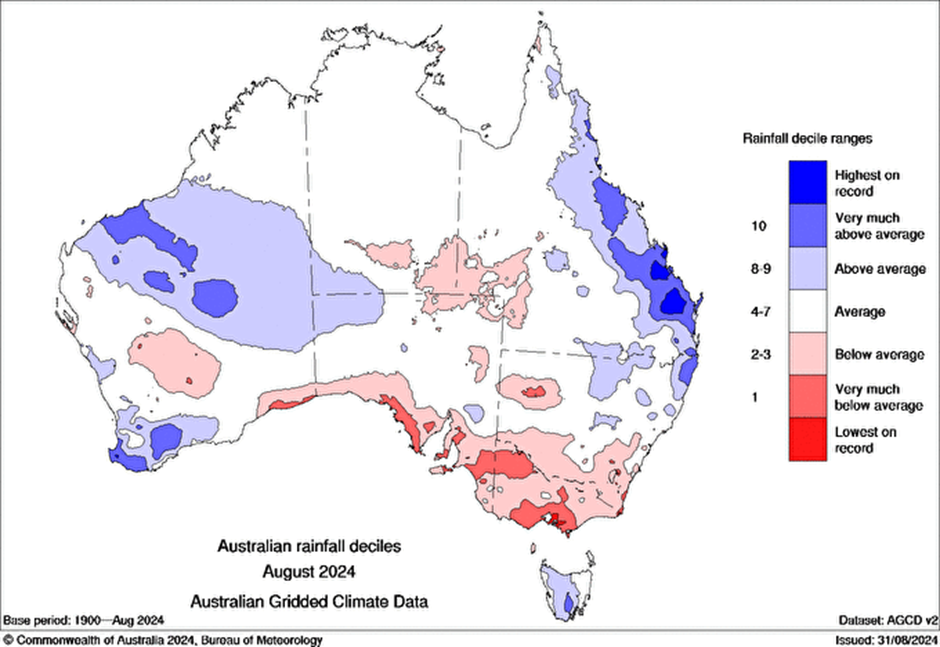Dry conditions impacting decision making
Key points
- Over the past month, both SA and Victoria have experienced dry conditions.
- Feeder steer prices have eased due to anticipated water shortages.
- Lamb prices have eased due to a decline in the quality of sheep.
Over the past month, rainfall has been below average in SA, Victoria and parts of southern NSW. The lack of rainfall has struck during lambing season, a time when lambs have their highest protein requirements. This has resulted in a higher turn-off in SA. In northern Australia, however, one of the better seasons is being observed leading to strong demand for cattle which has subsequently grown the herd.

As a result of the dry conditions, there has been an increased demand for feed, which will inevitably increase feed prices. Producers have been encouraged to wean early and ensure cows have enough fat cover to maintain fertility in the coming years. There will be a lingering impact on the quality of these animals. Feeding young calves low quality feed will impact weight gain early in their life due to not meeting their nutritional needs. To ensure the needs are met, producers must provide good quality silage, grain and pellets, providing calves with long-term success over their lifespan.
In preparation for potential water shortages, producers are turning off more lightweight steers, with heifers and calves also going to market. These potential water shortages may be linked to the easing of the feeder steer price in Victoria and NSW, as producers are cautious about having large numbers of animals on feed.
A similar trend is occurring with sheep, with early weaning resulting in lighter lambs and more secondary lambs coming to market. This has resulted in a downward push in prices. Victoria and SA both had a strong wet season early in the year, and as a result, there have been increased joining rates, leading to a larger lamb crop than the land can now sustain. Producers are now being forced to make tough turn-off decisions based on the dry conditions.
Attribute content to Emily Tan, MLA Market Information Analyst



